#prunus sp.
Text

#prunus persica#Jindai Botanical Garden#Tokyo#花桃#神代植物公園#東京#Tarmon SP AF 90mm F/2.8 Di MACRO 1:1 (272E)
16 notes
·
View notes
Text
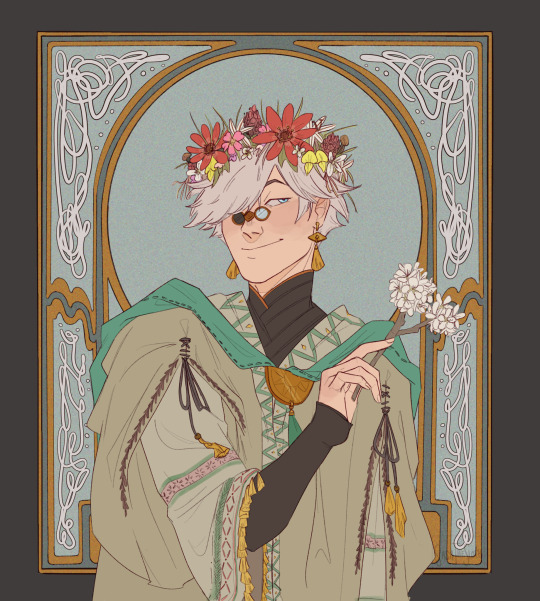
Cherry Tree, white (Prunus sp.)
#my art#wha#witch hat atelier#Δ帽子#Qifrey#ive got sketches and flowers picked out for Olruggio and the apprentices too#all the flowers here have meanings too#all meanings taken from Kate Greenaway’s book on project Gutenberg#cherry tree (white) - deception
797 notes
·
View notes
Text

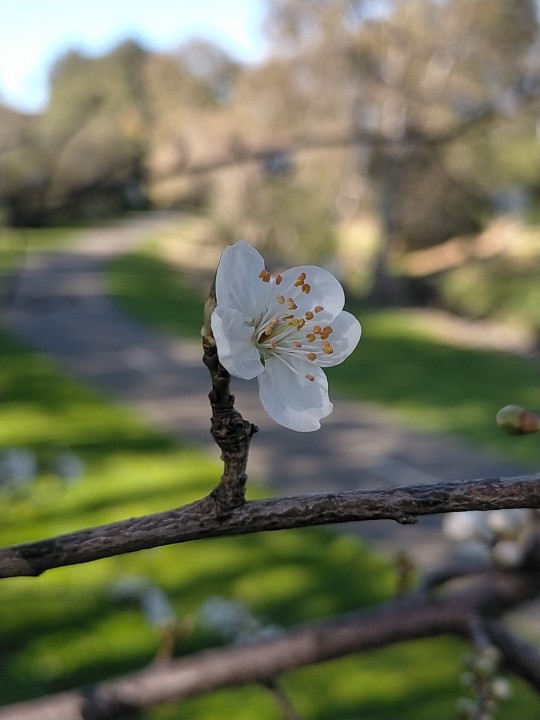

Prunus sp.
03-AUG-2023
Melbourne, Vic
23 notes
·
View notes
Text
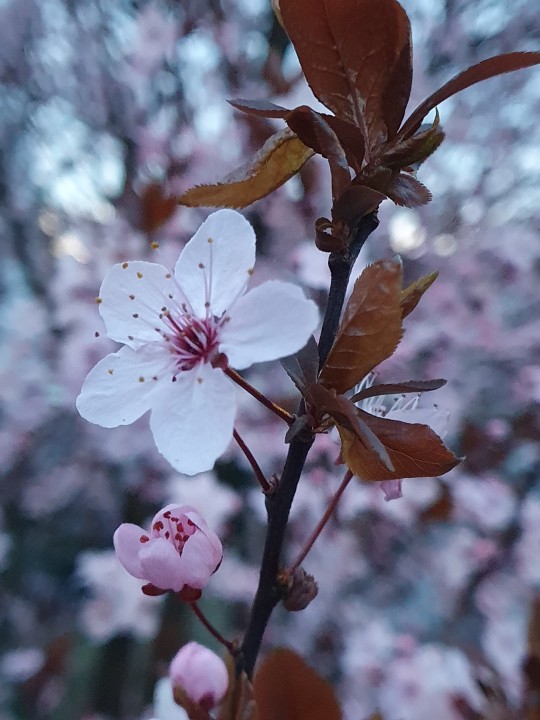
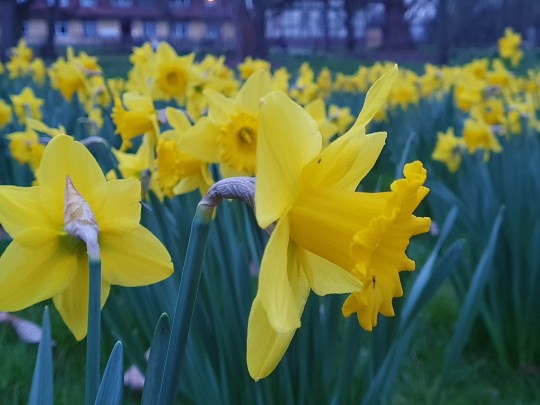





SPRING IS REALLY HEREEEEE
Prunus sp., Narcissus sp., Anemone nemarosa, Narcissus sp. with unknown beetle, Scylla bifolia, Corydalis cava (pink and white), Anemone ranunculoides.
The yellow colour (or whatever it looks like to the insects) of the Narcissus really attracted all kinds of insects. Flies, beetles, bugs... I should have made a different choice when choosing a tent, because it is also yellow and attracts many, many animals as well when I go camping. The amount of mosquitos is. Not ideal.
03/2024, Germany
6 notes
·
View notes
Text
Renaissance beauty ingredients and their uses:

Astragalus Antiseptic; emollient; soothing
Polygonum bistorta Anti-inflammatory; tonic; astringent
Bryonia Rheumatism; sciatica; anti-inflammatory
Cinnamonum camphora Anti-inflammatory
Pinophyta (Pinaceae) Patches and ointments
Cuminum cyminum Halitosis; stimulates circulation; disinfectant
Cyclamen europaeum Anti-inflammatory effect
Vicia faba Abscesses; erythema; skin rashes; inflammation of the skin; corns; warts
Ferula galbaniflua Tonic; stimulating; anti-infective; anti-inflammatory
Zingiber officinale Anti-spots; anti-dandruff; promotes hair growth
Acacia senegal Emulsifier
Boswellia Anti-inflammatory; antioxidant; antiaging; soothing; calming; elasticizer for red stretch marks
Arum italicum Expectorant; purgative; anti-inflammatory, antioxidant
Cyclamen hederifolium L. Purgative (toxic)
Juniperus Astringent; antiseptic; purifying for oily and impure skin and hair
Lilium Soothing; moisturizing; blemishes
Althaea officinalis Moisturizing; emollient; anti-inflammatory; anti-itching
Brassica oleracea Dry and brittle hair; anti-dandruff;
Allium cepa Anti-inflammatory, exfoliating; healing: antifungal; antibacterial
Rosaceae Sp. Anti-inflammatory; antioxidant
Rosa canina Antioxidant, anti-inflammator Astringent
Caesalpinia sappan Natural dye
Scilla
Urginea maritima Cardiotonic (toxic)
Prunus Amygdalus Dulcis Emollient; nourishing; antiaging; soothing; anti-stretch marks; hair care
Vitis vinifera Scalp psoriasis; hair care; face exfoliator
Viola Sp. Antiaging; anti-inflammatory; acne; eczema; herpes; psoriasis
Clematis viticella (Toxic)
Lupinus albus Wrinkle; antioxidant
Vitis vinifera Antioxidant; antiaging
Myristica fragrans Antiseptic; tonic; antioxidant; strong and shiny hair; oily skin
Eugenia caryophyllata Antiseptic; antioxidant
Pistacia lentiscus L. Oily skin; enlarged pores; acne
2 notes
·
View notes
Text
youtube
Sophie visits the gardens of a couple who have transformed a cow paddock into a biodiverse and beautiful garden for native plants and birds. Subscribe 🔔 http://ab.co/GA-subscribe
In the hills above Victor Harbor in South Australia, retired farmers Pat and Gerald Uppill have transformed a degraded block of land into a garden for native plants, wildlife, and for their own food and enjoyment.
Pat says, “It was a cow paddock that we managed to get in 2003, and we’ve gone from there. The minute we walked in we started gardening.” Whilst there were some trials and losses, eventually, they decided that planting natives was the best way to go to support and complement the existing mature gum trees and patches of remnant bushland.
Some parts of the site have very sandy soil, which was perfect for growing an ornamental banksia garden. There’s a variety of species from different areas of Australia, including a prostrate Coast Banksia and the brilliant red flowers of the Scarlet Banksia. The native plants attract a lot of wildlife, including at least 80 species of birds such as honeyeaters, lorikeets, finches, Pat’s favourite Crested Shrike-tits, and the much-loved Superb Fairy-wrens.
The property also has a perched swamp – a wetland area perched on a hillside, rather than at the bottom of a gully. It’s an important water source for the bushland which in turn provides important breeding and feeding habitat for wildlife.
Closer to the house, there’s an orchard with 22 fruit trees, well protected from the wildlife, and a productive veggie patch that saves them running to the shops. This gorgeous garden is a result of nearly 20 years of love and labour, and a commitment to protecting and celebrating native species.
Featured Plants:
PROSTRATE COAST BANKSIA - Banksia integrifoliacv.
SCARLET BANKSIA - Banksia coccinea
TEA TREE - Leptospermum sp.
CHERRY - Prunus cv.
Featured Species:
TAWNY FROGMOUTH - Podargus strigoides
NANKEEN NIGHT-HERON - Nycticorax caledonicus
NEW HOLLAND HONEYEATER - Phylidonyris novaehollandiae
CRIMSON ROSELLA - Platycercus elegans
RAINBOW LORIKEET - Trichoglossus haematodus
RED-BROWED FINCH - Neochmia temporalis
CRESTED SHRIKE-TIT - Falcunculus frontatus
SUPERB FAIRY-WREN - Malurus cyaneus
Filmed on Ngarrindjeri Country| Lower Inman Valley, SA
#gardening australia#Australia#Solarpunk#native plants#native birds#cow paddock#victor harbor#Gerald Uppill#Pat Uppill#Coast Banksia#Scarlet Banksia#orchard#gardening#garden#native species#Youtube
7 notes
·
View notes
Photo
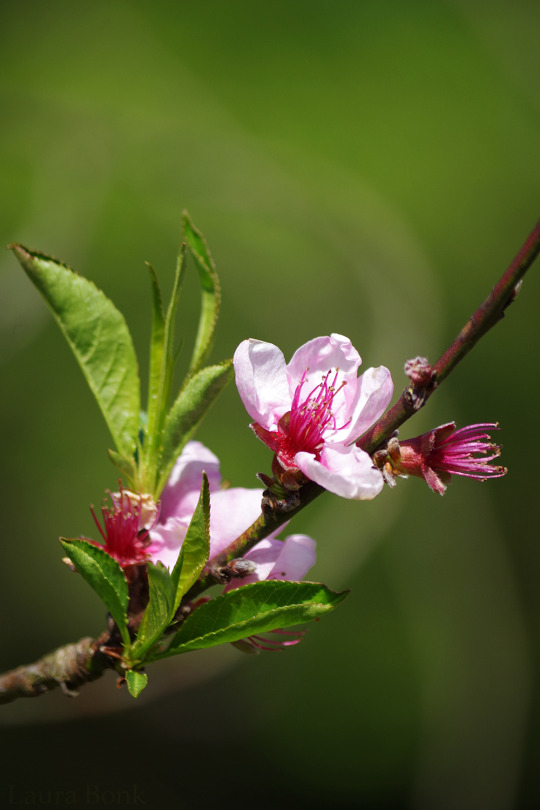
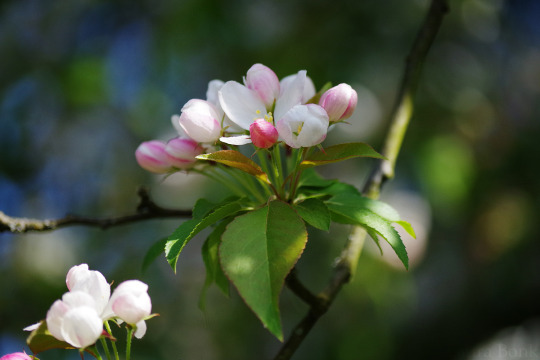

Rosaceae trio
A peach, an apple and a cherry bloom in the botanical garden. Wait no, it’s not a joke.
Prunus persica, Malus sp. and Prunus sp. (it might be the ‘Accolade’ (P. sargenta x subhirtella again))
I’m not sure if I ever caught all of them flowering on the same visit before.
18-04-2018 // botanical garden ruhr uni
#nature photography#peach blossom#apple blossom#cherry blossom#rosaceae#prunus persica#malus#prunus#pink#april#botany#botanical gardens#2018
4 notes
·
View notes
Text

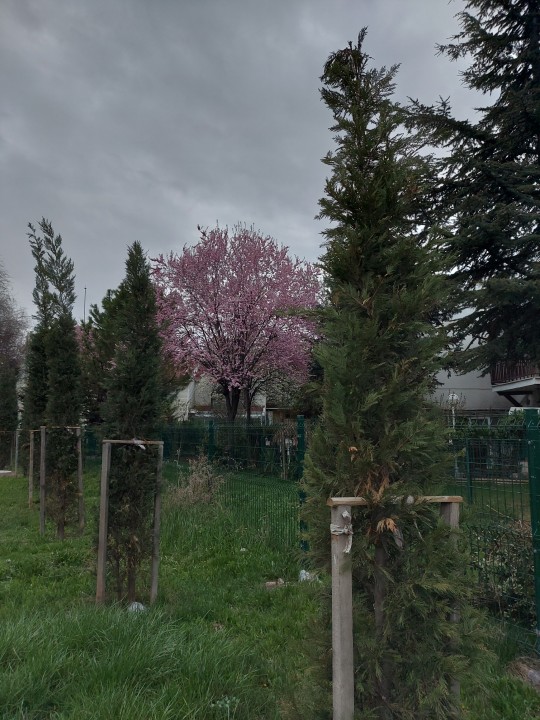

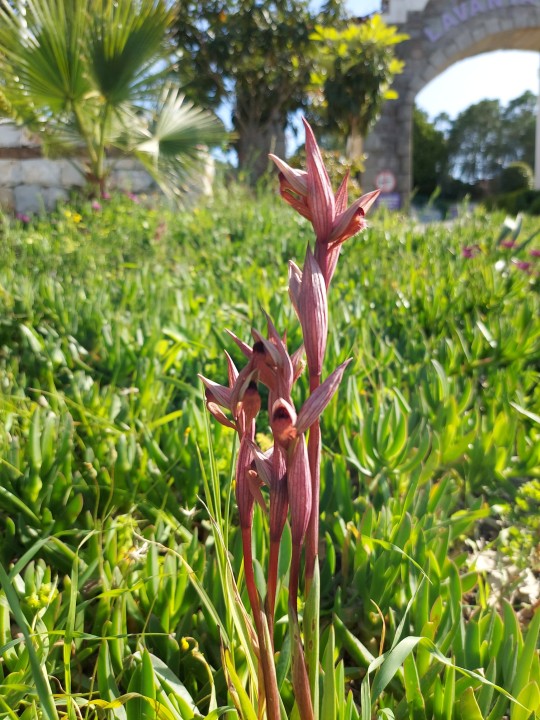


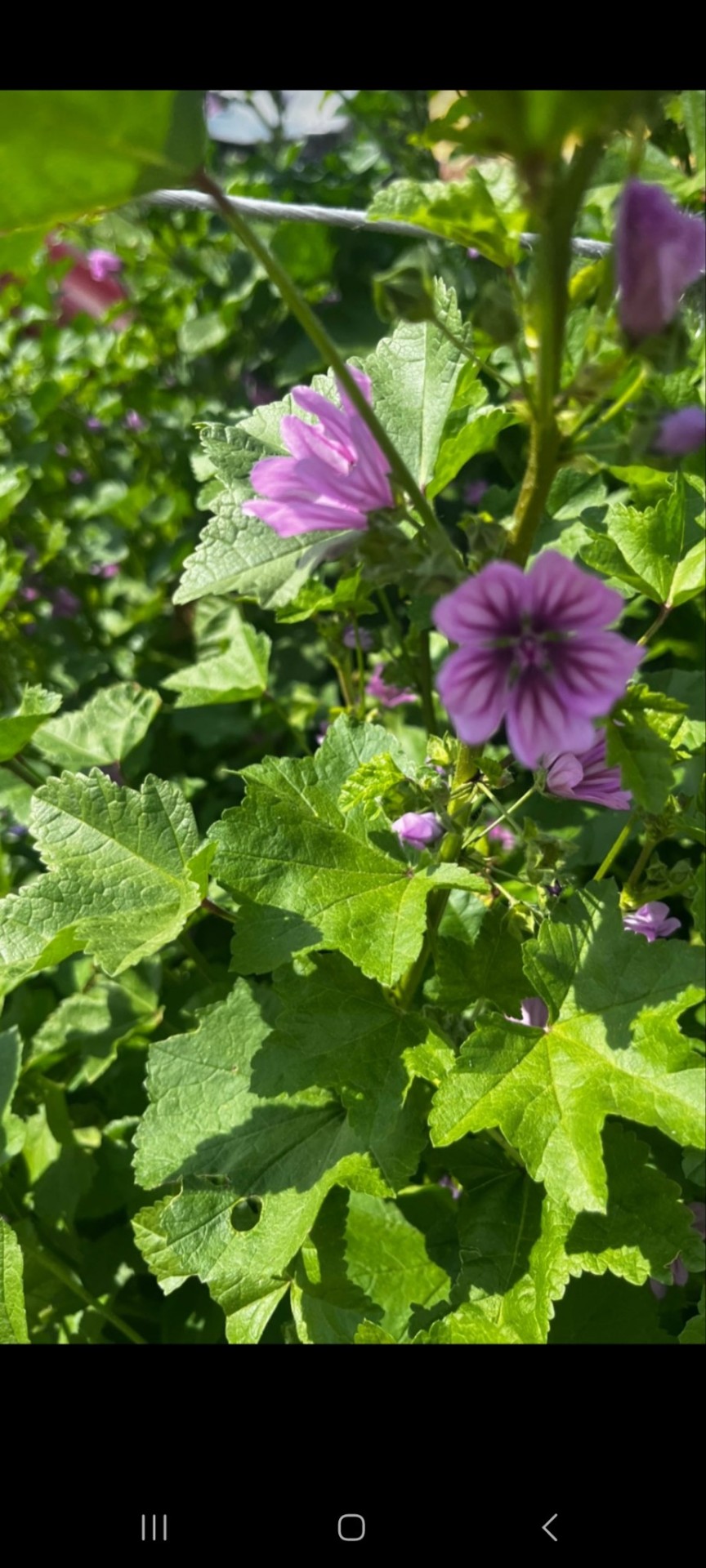

Flower pics before spring ends
1-Syringa vulgaris
2- Prunus sp. (likely Prunus domestica)
3- Prunus sp. (likely Prunus domestica L.)
4- Serpias sp.
5- Prunus sp. (likely Prunus amygdalus var. dulcis)
6- thats a bee (Apis mellifica)
7- Malvae sylvesteis
8- Prunus amygdalus (var. dulcis)
Coolest thing university has given me is the ability to identify plants and i feel like a witch each time i look at a plant and go "Oh yes, Malva sylvestris!"
All these plants are common around where I live. They have been embedded into our culture, idioms, cusine, they have created our idea of beauty, what we can create with these plants we have considered delicious, the soil these flowers bloomed we have considered sacred, we have given them names and then named our children after them. We made up stories about them and believed in those stories. They happened our lives, and our lives revolved around them, us, as a tiny society in the seaside, became one with those plants. They were our food and we were theirs.
They have taught us of love and we have lived up to that. We tried to live up to that.
They have taught us how to live, in harsh conditions, starving of food, love, thirsty and unwelcome, they have taught us of how to love and strive. They became our food when we had none. Our shade when we were burning, our fire when we were freezing, our stories when we were bored.
They were how we learned not to fall or to get up, how we learned sharing, wisdom, patience. They were our greatest, most selfless teachers. Their scent filled up forests, pastures, even cities. They were there during the most important times of our lives, the scent of flowers was there for our birth and death, and when we graduated and married and laughed and cried. My city, it smells of lilacs.
Malvae Sylvestris was "İlmik" for me, when i was growing up. It grew during the rainy season, it made delicious börek filling and also was great with a side of youghurt. It is "ebegümeci" for some people still, which derives from "ebe gömeci (midwife's burier)", for its use in abortions before healthcare was as easy to reach. To some, this is medicine for the stinging nettle, or burns.
Prunus amygdalus is, well, almond, it is food to say the least. Almonds, "çağla" before almonds mature, and if fruits did not exist we would gnaw on the dried liquid dripping from the bark. The inedible variation, Prunus amygdalus var. amaratus, contains some amount of arsenic. The scent reminds me of thr bitter almond cookies, delicious really, to Gabriel Garcia Marquez it apparently inevitably reminded of thr fate of unrequited love. "Love in the Times of Cholera" smells like bitter almonds, the story, the whole story does.
Not a picture of them here, but here, stories about Morus nigra and Laurus nobilis and Rosa damascena and Galanthus sp.
You must know Apollon and Daphne, and how the poor girl was absolutely hating this god because of Apollo's cockiness and ego, how she begged the gods to be forgiven for a fault she did not commit. How, just as she was about to give up, she was turned into a tree, a laurel. How her body, still alive, now as a tree, had not found peace as Apollo made crowns out of her leaves, oh just because he loved her so much. This is a warped, horrible story about love, and about how we can sometimes do nothing or anything can be forgiven when they are out of love, no matter how badly we hurt others. This is glorifying being blind- as was Apollo. A beautiful story regardless.
Rosa damascena is again from greek mythology, and is a prettier, kinder, more gentle story- or as pretty and kind and gentle as Greek mythology goes. This is how Aphrodite's blood colored the all white roses red, as she was rushing to reach her dying lover. This is what she did for the one she truly loved, she was hurt and she did not care. This is what we think of true love. The lover died regardless. Red roses smell like blood to me, since then.
And do you want to hear yet another story? This is a regional story for snowdrop. Legend says that snowdrop was a delicate flower. So delicate yet so brave, so brave yet so in love. It was in love with the sun itself, and each day as it waited under the soil to bloom, the more the longing in its heart grew. The flower, in cold weather, imagined the gentle rays of the sun, pretty days of the spring. Each time it tried to repress its longing, it grew inside of the flower a little bit more. Each time the flower dreamt of beautiful, warm days of the spring, the cold felt colder. The snowdrop, being the brave little soul it is, then decided to bloom right that moment. The poor flower though, was gentle. Other flowers shouted, and the wind whispered to the seed, "do not bloom." "If you bloom now, the cold will kill you. If you bloom now, the snow will freeze you." It kniewz the snowdrop knew very well that the cold would kill it, and the snow would freeze it. One day, the flower waited for the snow to melt. Two days, for the air to get warm. Three days, the snowdrop was impatient. It longed for the sun more strongly than anyone had ever wished for something. The snowdrop turned its head away from other plants waiting under the soil, and started growing. It grew, grew, grew... But it was impatient, and the snow was still resting on the soil. The snowdrop did not care, and reached up, until it could finally see the sun. The already delicate flower was weakened already, and the cold was too much for it. Yet soon, the morning came and the sun was up. The sun rays were as warm and as gentle as the snowdrop had imagined, and the light was as beautiful. The sun smiled upon the snowdrop, and the snowdrop had seen the sun which it had missed for so long. It had touched the light for as much as it could... But the cold, the cold and the snow was too much, and the snowdrop was the only flower around. There died the poor flower, right that night, having seen the sun at the expense of its own life.
And yeah, mulberry. Would love to tell the story myself, but no. Just read, directly, from the source.
#biology#random though of the day#i dont know what im saying#read my stories while youre at it#culture
1 note
·
View note
Text
Jeremías, el profeta del siglo VII a.C., dice que "las costumbres de los pueblos son vanidad" porque un leño "con plata y oro lo adornan; con clavos y martillo lo afirman para que no se mueva".
Hay algunos versículos de la Biblia que parecen indicar que está mal decorar la casa con objetos de madera. Por ejemplo, Jeremías 10:1-5 e Isaías 44:14-15 prohíben específicamente el uso de la madera para esculpir ídolos.
Jeremías se refiere a la vanidad de adorar "objetos sin valor", propia de los paganos, en vez de venerar al Señor, "el Dios verdadero". El árbol de Navidad no existía como tal, pero estos versículos revelan una costumbre ancestral: cortar un árbol para adornarlo o, como hacían los babilonios, para dejar regalos debajo del mismo. Tertuliano, un cristiano que vivió entre los siglos II y III d.C., critica los cultos romanos paganos, imitados por algunos de sus correligionarios, de colgar laureles en las puertas de las casas y encender luminarias durante los festivales de invierno.
En la Concepción General original de las decoraciones navideñas nosotros la entendemos para recordar y celebrar que Jesús vino al mundo y no para adorar esos objetos en sí.
A través de la historia, Se han utilizado los árboles y las hojas para expresar sus costumbres y tradiciones.
Por ejemplo, por muchos siglos los alemanes y los escandinavos han colocado en sus hogares durante el invierno pinos y adornos con hojas naturales como símbolo de que la primavera regresará y que el invierno no es eterno.
Hay teorías sobre culturas paganas que usaban los árboles para representar a sus dioses, por ejemplo, el dios de la fertilidad.
Sin embargo, todo da a Suponer que la Tradición del árbol de Navidad se originó con Bonifacio, un Misionero inglés que fue a evangelizar Alemania entre los años 680 y 754.
Se dice que él cortó el roble donde hacían sacrificios a Odín (un dios celta) y lo reemplazó por un abeto, un árbol que permanece verde durante todo el año. Lo adornó y lo puso como símbolo del amor eterno de Dios, dándole así un significado muy Claro.
Otros dicen que el origen está en Martín Lutero, pues él promovía el adornar árboles con frutos que representaban el árbol del paraíso, y con velas o luces en representación de Jesús, la luz del mundo. La costumbre tiene Raíces Nórdicas.
Lo que realmente importa es la razón por la que colocamos el árbol de Navidad, el significado que tiene para nosotros. Debe ser una decoración que refleje nuestro gozo al celebrar el nacimiento de Jesús. También podemos usarlo para hablar a otros sobre él, por qué vino a la tierra, y por qué murió en la cruz.
La Biblia contiene más referencias a árboles y bosques (más de 525) que a cualquier otro tipo de organismo viviente exceptuados los humanos. Estas referencias se encuentran desde el primer libro de la Biblia, que menciona el árbol de la vida en el Jardín de Edén (Génesis, 2:9) hasta el último libro del Nuevo Testamento, que se refiere al árbol de la vida como característica destacada del paraíso (Apocalipsis, 22:2, 14). La distinción entre un árbol con un gran tronco único y un arbusto o mata con varios tallos no siempre es clara y algunos, como el olivo y el granado, pueden ser ambas cosas.
En la Biblia se reconocen 22 árboles:
• acacia (Acacia spp.);
• agáloco (Aquilaria sp.);
• álamo (Populus euphratica y P. alba);
• algarrobo (Ceratonia siliqua);
• almendro (Amygdalus communis, llamado a veces Prunus dulcis);
• árbol del incienso (Boswellia spp.);
• ciprés (Cupressus sempervirens);
• ébano (Diospyros ebenum);
• granado (Punica granatum);
• higuera (Ficus carica);
• manzano (Malus domestica; hay muchos sinónimos para el manzano cultivado);
• nogal (Juglans regia);
• palma datilera (Phoenix dactylifera);
• pino (Pinus halepensis y P. pinaea);
• pistacho (Pistacia vera);
• plátano (Platanus orientalis);
• roble (Quercus sp.);
• sauce (Salix spp.);
• sicomoro (Ficus sycomorus);
• tamarisco (Tamarix spp.);
• terebinto (Pistacia atlantica, P. terebinthus y posiblemente P. lentiscus);
• tuya (una madera oscura, mencionada solo en Apocalipsis, 18:12, que podría ser Tetraclinis articulata, pero cuya identidad botánica es descon ocida).
Exceptuada la misteriosa tuya, el único árbol exclusivo del Nuevo Testamento es el algarrobo. En Lucas, 15:16, las algarrobas se dan de comer a los cerdos.
De los 22 árboles de la Biblia, la palma datilera, la higuera, el olivo, el granado y el tamarisco se mencionan también en el Corán.
Exclusivos del Corán son el talh (los estudiosos dudan si es el banano, que no es un árbol, o una especie del extendido género Acacia), el sidr (un arbusto espinoso, probablemente Zizyphus spina-christi) y el misterioso y horrible «árbol del Infierno» o zaqqm (As-Saffat, 37:65, Ad-Dukhn, 44:49, Al-Waqi’a, 56:51):
«¿No es mejor recibido que el árbol zaqqm? Hemos hecho de este árbol un azote para los injustos. Crece en las profundidades del Infierno, llevando frutos como cabezas de demonios: con él se alimentarán y llenarán sus vientres, junto con tragos de agua hirviente. Entonces regresarán al Infierno.»
Sura 37:62-68
Textos religiosos como los Hadiths islámicos, los Mishnah judaicos y los escritos de los antiguos padres de la Iglesia cristiana contienen también mucha información sobre tradiciones y leyendas relativas a plantas. Algunas referencias a plantas en los primeros escritos cristianos han llegado incluso a hacerse tan familiares que se las supone procedentes de los textos sagrados. Por ejemplo, la tradición judeocristiana sostiene generalmente que en el Jardín de Edén Eva tentó a Adán con una manzana del árbol prohibido. Sin embargo, en el libro del Génesis del Antiguo Testamento, el árbol relacionado con la desobediencia de Adán y Eva no se identifica como un manzano.
Los árboles son Considerados Especiales todavía hoy en muchos países, entre ellos Iraq, Israel, Líbano y la República Árabe Siria.
Entre los árabes drusos y musulmanes, algunos árboles se consideran sagrados. Tales árboles están a menudo cerca de las tumbas de santos o santas a las que los visitantes van a hacer rogativas. Prometen hacer buenas obras si sus peticiones son escuchadas, y atan paños, tiras de tela o trapos a los árboles como indicación solemne de su promesa de cumplir sus votos (Dafni, 2003).
Del bosque original de cedros del Líbano que antaño cubría la ladera occidental del monte del Líbano, queda menos del 3 por ciento. Casi todo este bosque está protegido. Una de las reservas, llamada «Los Cedros del Señor» (Arz el-Rab), un resto de pocos centenares de hectáreas en el monte del Líbano, ha sido considerada sagrada por los cristianos maronitas que han vivido durante un milenio en la región.
Los romanos adornaron las calles durante las Saturnales, pero fueron sobre todo los celtas quienes decoraron los robles con frutas y velas durante los solsticios de invierno. Era una forma de reanimar el árbol y asegurar el regreso del sol y de la vegetación. Desde tiempos inmemoriales, el árbol ha sido un símbolo de la fertilidad y de la regeneración.
El cristianismo adoptó y transformó estas costumbres paganas ante la imposibilidad de erradicarlas. Cuenta la leyenda que en el siglo VIII había un roble consagrado a Thor en la región de Hesse, en el centro de Alemania. Cada año, durante el solsticio de invierno, se le ofrecía un sacrificio.
El misionero Bonifacio taló el árbol ante la mirada atónita de los lugareños y, tras leer el Evangelio, les ofreció un abeto, un árbol de paz que "representa la vida eterna porque sus hojas siempre están verdes" y porque su copa "señala al cielo".
A partir de entonces se empezaron a talar abetos durante la Navidad y por algún extraño motivo se colgaron de los techos. Se cuenta que el teólogo Martin Lutero puso unas velas sobre las ramas de un árbol de Navidad porque centelleaban como las en la noche invernal. Dos ciudades bálticas se disputan el mérito de haber erigido el en una plaza pública: Tallin (Estonia) en 1441 y Riga (Letonia) en 1510. Unos comerciantes locales instalaron un abeto en la plaza del mercado de Riga, lo decoraron con rosas artificiales, bailaron a su alrededor y finalmente le prendieron fuego. Hoy se iluminan con, como en esta fotografía de la plaza de la Ciudad Vieja de, donde la ceremonia de encendido atrae cada año a miles de personas.
Hay Cosas específicas, además del Árbol de Navidad, que podemos usar en nuestros hogares para comunicar el verdadero significado de la Navidad.
Esta época nos presenta una gran oportunidad para compartir sobre el amor de Dios y hay unas cuantas decoraciones que nos pueden ayudar a hablar sobre el valor del nacimiento de Jesús.
El belén, pesebre o nacimiento
La estrella
Las luces y velas
Los ángeles
La corona de adviento
Bibliografía
https://historia.nationalgeographic.com.es/a/de-donde-viene-arbol-navidad_9997.

0 notes
Text
TURISIAN.com – Akhir tahun (2022) tinggal menghitung hari. Jika kalian ingin menghabiskan moment penting ini dialam terbuka, Kebun Raya Cibodas bisa menjadi pilihan.
Berada di Kabupaten Cianjur, Jawa Barat. Lokasi ini jaraknya sekitar 100 kilometer (km) jika ditempuh dari Jakarta. Atau 80 km jika ditempuh dari Kota Bandung.
Kawasan ini punya berbagai koleksi tumbuhan unik dan langka baik dari dalam maupun luar negeri. Seperti aneka bunga anggrek yang menjadi Puspa Pesona, bunga kuku macan dari New Guinea, dan bunga bangkai khas Indonesia.
Bahkan dalam kawasan Kebun Raya Cibodas ada beberapa taman tematik yang berisi kelompok tumbuhan berbeda.
BACA JUGA: Enam Kebun Raya di Indonesia, Pilihan Tepat Wisata Keluarga
Misalnya Taman Sakura yang memiliki lima jenis bunga aakura, yakni Prunus cerasoides, Prunus yedoensis, Prunus yamasakura, Prunus lannesiana, dan Prinus sp.
Kemudian ada Taman Rhododendron yang diisi oleh bunga-bunga semak, atau kerap juga disebut azalea.
Selanjutnya ada Taman Obat yang mempunyai ratusan jenis tanaman obat, Taman Lumut yang berbentuk seperti habitat lumut, dan Taman Liana yang mengoleksi tanaman rambat.
Berikutnya pengunjung juga bisa menemukan koleksi tanaman indoor (dalam ruangan) yang ada di Rumah Kaca, seperti anggrek, kaktus, dan tanaman sukulen. Rumah Kaca ini juga berfungsi sebagai tempat pembibitan.
BACA JUGA: Menikmati Petang Di Sisi Istana Cipanas, Tetap Menyimpan Keindahan
Cara beli dan harga tiket masuk per November 2022
Kebun Raya Cibodas berlokasi di Jalan Kebun Raya Cibodas, Sindangjjaya, Kecamatan Cipanas, Kabupaten Cianjur, Jawa Barat.
Harga tiket masuk untuk wisatawan nusantara dan mancanegara mulai dari Rp 15.550 pada hari biasa (Senin-Jumat), dan mulai Rp 25.500 pada akhir pekan dan libur nasional.
BACA JUGA: Samaun Hill Park Surga Liburan Keluarga di Kabupaten Lebak
Kebun Raya Cibodas buka setiap hari mulai pukul 08.00-16.00 WIB pada hari Senin-Jumat, serta pukul 07.00-16.00 WIB pada hari Sabtu, Minggu, dan libur nasional.
"Untuk tiket bisa dibeli secara online di website kebunraya.id. Atau bisa beli langsung di Kebun Raya Cibodas-nya. Bisa juga bayar tunai atau pakai Qris," kata Humas Kebun Raya Clara seperti dikutip Turisian.com dari Kompas.com, Kamis 17 November 2022.
Clara menambahkan, harga tiket di atas sudah berlaku untuk anak yang tingginya di atas 80 sentimeter. ***
0 notes
Text

#prunus persica#Jindai Botanical Garden#Tokyo#花桃#神代植物公園#東京#Tarmon SP AF 90mm F/2.8 Di MACRO 1:1 (272E)
12 notes
·
View notes
Text
Quercus lusitanica pdf
QUERCUS LUSITANICA PDF >>Download (Herunterladen)
vk.cc/c7jKeU
QUERCUS LUSITANICA PDF >> Online Lesen
bit.do/fSmfG
05.07.2022 — PDF | A flora from the Palaeogene of Hochstetten-Dhaun (Nahe-area, Quercus sp. vel Castaneophyllum sp., Eotrigonobalanus furcinervis 05.07.2022 — PDF | A new species of the Western Palaearctic weevil genus dichten und feuchten Quercus suber-und Prunus lusitanica-Wälder vor allem in Researches about oak-gall wasps (Hymenoptera, Cynipidae) in Turkey. Klaus Hellrigl 1 & Süleyman Bodur 2 Quercus lusitanica Lam. vor, und zwar an der von. Quercus lusitanica. 97h. Piptalkerum milizceam. 300 Blatter. 130 Exemplare. 100 Zweige. Vicia sativa. 973. 979. Papaver somniferun. 03.01.2013 — putatively related to it could be Urnula lusitanica Torrend & Boud. Grevena, along with Quercus cerris and Acer pseudoplatanus,. The European Oak Bark Beetle is primarily a pest in Europe, North Africa and the. Near East. Quercus lusitanica (Lusitanian oak),. Quercus polycarpa,. 24.11.2021 — Quercus infectoria G.Oliver aus Singapur. Alternativer Titel: Quercus infectoria Oliv. Quercus lusitanica Lam. aus Sri Lanka. Download Free PDF PDF Pack. People also downloaded these PDFs Arten (Quercus robur, Quercus pyrenaica, Quercus lusitanica, Quercus faginea,
https://www.tumblr.com/faribujodaga/697745958695534592/dyscrasias-sanguineas-pdf-writer, https://www.tumblr.com/faribujodaga/697747436570132480/m185xw01-vd-pdf-editor, https://www.tumblr.com/faribujodaga/697747207053541376/country-piano-riffs-pdf-merge, https://www.tumblr.com/faribujodaga/697745958695534592/dyscrasias-sanguineas-pdf-writer, https://www.tumblr.com/faribujodaga/697747436570132480/m185xw01-vd-pdf-editor.
0 notes
Text


Prunus sp.
26-JUL-2023
Melbourne, Vic
#australia#victoria#melbourne#flowers#white#white flowers#rosids#rosales#rosaceae#amygdaloideae#amygdaleae#prunus
1 note
·
View note
Text

With this lovely Prunus sp. I want to remind you not to do any labour - emotional or physical - or even favours for the ungrateful men (which means almost all of them) in your life.
They watch you do the dishes? Stop. Sit with them and chat. Watch them become uneasy with how well you can ignore the work that needs to be done, too.
DON'T DO NICE THINGS FOR MEN, they will start to expect it and show zero gratefulness, only complaining when you stop coddling them.
03/2024
2 notes
·
View notes
Photo



#photographers on tumblr#original photography#scenery#cottagecore#spring#grandparentcore#lovecore#flowers#petals#sakura#skyscape#sky#clouds#pink aesthetic#prunus sp.#color contrast#naturecore#my pictures
1K notes
·
View notes
Photo
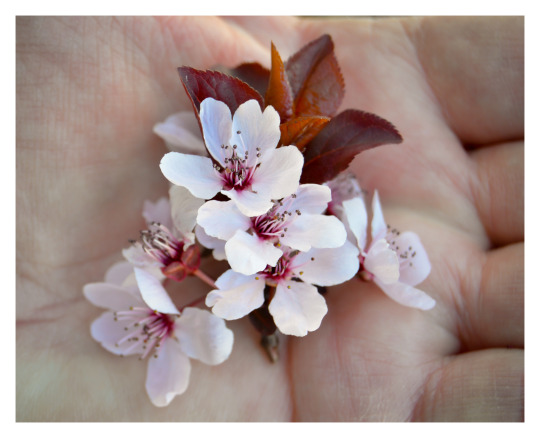
Untitled.
118 notes
·
View notes